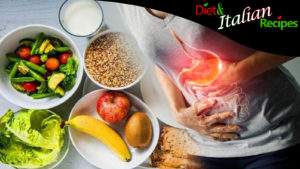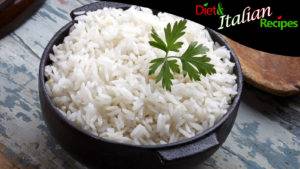The ideal diet for diabetics functions as a diet therapy, thanks to the consumption of low glycemic index foods, the patient feels better. More than 4.9% of the population is affected by diabetes mellitus, especially people over 60, according to WHO there are 346 million in the world. Of these people, 90% have type 2 diabetes, which can be treated with medication and diet, by choosing a diet with low glycemic index foods for a healthy diet. Here’s how to follow a diet for diabetics and which foods to choose to lower blood sugar.

About 90% of diabetics follow a dietary therapy, which mainly involves low glycemic index foods. In this article, we show you which foods to prefer at the table to avoid raising blood sugar, and this diet can also help you lose weight. Weight loss in diabetics, like in others, is beneficial within the limits of body mass index.
Diet for diabetics
A balanced diet like the diet for diabetics is therapeutic and helps to keep blood sugar levels under control.
The ideal diet for diabetes is not complex to follow or restrictive, in fact, you will only need to be careful about four determining factors:
- firstly, glycemic control;
- achieving the desired weight and maintaining body weight;
- prevention and treatment of major cardiovascular risk factors;
- maintenance of a state of well-being not only physically but also mentally.
The diet for diabetics should always be personalized, taking into account dietary habits, both of the individual and of the family, and their social needs (e.g., what to eat during an aperitif with friends?).
In this regard, we must emphasize that an ideal diet for diabetics involves an exact consumption of carbohydrates. The amount of carbohydrates consumed in a day should not be less than 130g or greater than 300g per day.
Furthermore, they should preferably come from foods rich in complex carbohydrates and dietary fiber, such as legumes, vegetables, whole grains, and fruit.
Diet therapy for diabetics
Diet therapy for diabetics is a set of small considerations at the table and during leisure time with friends and family. Always remember that your diet should be slightly different from others, but only because you choose healthier food sources.
Tips for effective diet therapy for diabetics:
- Consume 5 portions a day of vegetables and fruit, varying the colors: green (vegetables), red (tomatoes), orange (carrots, oranges).
- Prefer whole grain products such as whole grain bread and pasta.
- Use legumes (beans, lentils, chickpeas, peas, etc.) at least three times a week.
- Consume at least two servings of fish per week.
- Prefer lean and white meats.
- Drink a cup of partially skimmed or skimmed milk per day or a low-fat yogurt, for example, for breakfast.
- Take in cheeses and dairy products no more than twice a week.
- Use olive or seed oil to cook or dress salads, avoiding “saturated” fats such as butter, lard, cream, bacon, and the like.
- Also, minimize the so-called “trans” fats present in crackers, cookies, and snacks that indicate the presence of hydrogenated or partially hydrogenated oils and fats on their labels.
- When choosing beverages, prefer “diet” ones without sugar.
- If alcoholic beverages such as wine or beer are used, limit consumption to 1 glass for women and 2 for men per day, preferably during meals.
Low glycemic index diet for diabetics
Diabetics must follow the diet called diet therapy to stay as healthy as possible, which is why it is essential to know which foods have a low glycemic index.
The low glycemic index foods proposed in the diet allow diabetics to reduce the amount of sugar in their blood, and with blood sugar within normal range, people with diabetes feel better.
For diabetics, here’s a list of foods with a low glycemic index for a proper diet:
| Low glycemic index foods | Glycemic index |
|---|---|
| Spices, shellfish (various), herbs (various) | ± 5 |
| Zucchini, avocado, tofu, ginger, soy, spinach, shallot, celery, radish, blackcurrant, rhubarb, leeks, pine nuts, pistachio, peppers, Genovese pesto, olives, chili pepper, nuts, hazelnut, lupin, almond, lettuce (various), endive, sprouts, mushrooms, fennel, tagliatelle, carob flour, wild chicory, bran (various), onion, sauerkraut, cucumber, pickled cucumber, Brussels sprouts, cabbage, cauliflower, broccoli, chard, asparagus, peanuts, cashews, ground cherry, agave syrup | ± 15 |
| Lemon juice (natural), soy yogurt, cooking soy, tamari sauce (natural), ratatouille or caponata, eggplants, bamboo sprouts, granular fructose, heart of palm, dark chocolate (>85%), artichoke, West Indian cherries, bitter cocoa, gooseberry or kiwi, skimmed yogurt | ± 20 |
| Pumpkin seeds, currants, whole hazelnut puree, whole almond puree, dried peas, peanut butter, pearl barley, blackberry, green lentils, raspberry, hummus, strawberries, soy flour, navy beans, mung beans (soy), dark chocolate (70%), cherries | ± 25 |
| Soybean vermicelli, chard, turnips, grapefruit, tomatoes, pears, sugar-free jam, tangerine/clementine, yellow lentils, lentils, skimmed milk, whole milk powder, oat milk, soy milk, almond milk, passion fruit, candied fruits, ricotta, chickpeas, carrots (raw), raw beets, garlic, apricots | ± 30 |
| Flavored soy yogurt, fiber Wasa, durum wheat vermicelli, tomato juice, mustard, celeriac, tomato puree, wild rice, quinoa, white almond puree, plums, dried tomatoes, fresh peas, peach-palooza, peaches, compote apples, pomegranate, apple-cinnamon, quince, ancestral corn, flax seed, sesame seed, poppy seed, brewer’s yeast, dried yeast, sunflower seed, fructose cream ice cream, fig, chickpea flour, falafel, kidney beans, black beans, cranberry beans, canned chickpeas, cassoulet, cannellini beans, azuki | ± 35 |
SHARE the low glycemic index diabetic diet.











